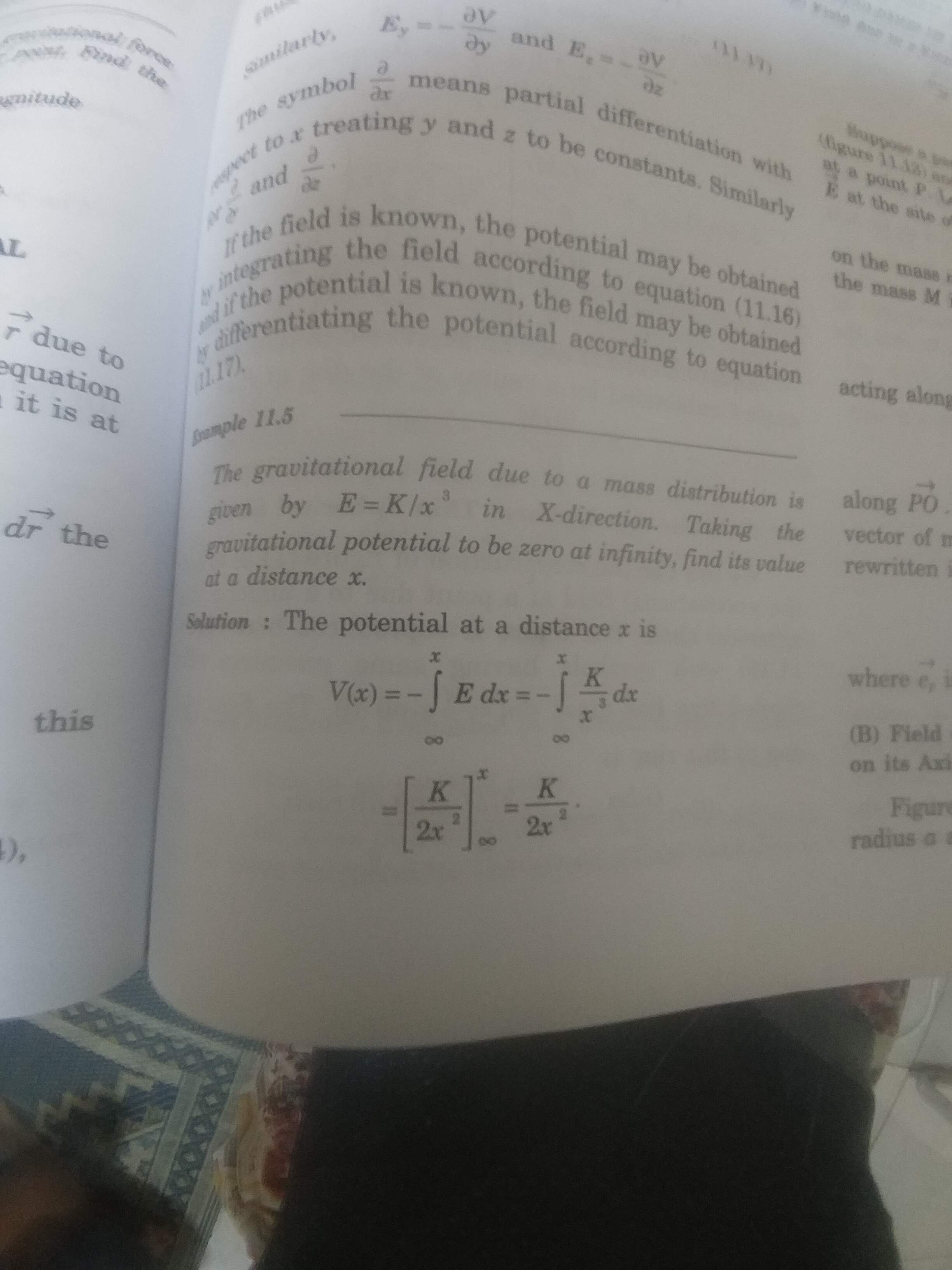Q.The The gravitational field due to a mass distribution is given by E=k/(x^3)$E=k/(x^3)$ in X$x$-direction. Taking the gravitational potential to be zero at infinity, find its value at a distance x$x$.
for the answer let the 'integral where the lower limit is infinity and upper limit x' be denoted as I
The answer my textbook gives to the above question is :

shouldn't the dot product of E and dx (because we are traveling from infinity to a point) give - sign so the final answer should be negative.
